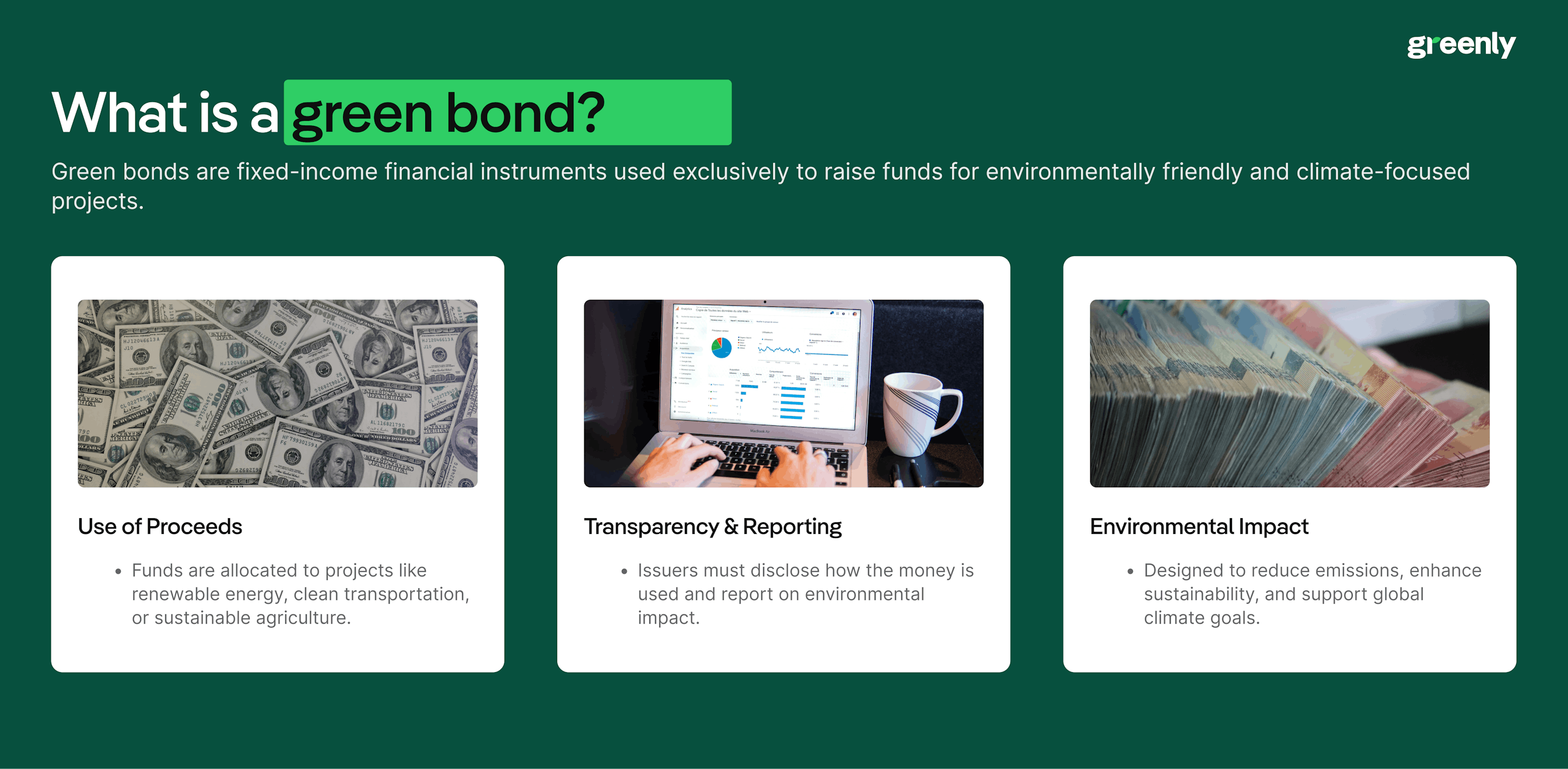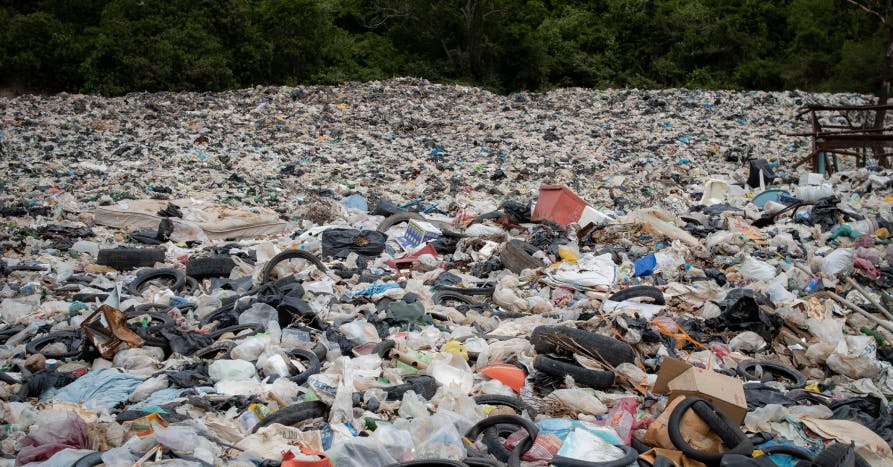ESG / CSR
Industries
What is a Green Bond and How does it Work?



Sustainable finance has grown in popularity as climate change and corporate sustainability become more important for companies seeking long-term business success and customer loyalty, and taking part in green bond framework has shown to be a popular form of sustainability bonds in the midst of climate change mitigation.
As of 2025, the green bond market is continuing to expand at an unprecedented pace – offering organisations a way to align financial strategies with environmental commitments and sustainable development goals. In fact, a Turkish based company called Turkcell has been successful in investments – as they raised $1 billion USD, of which included a $500 million USD green bond.


However, between impact investing, socially responsible investing, and green financing – it can be difficult for companies to choose which type of sustainable investment is right for them.
What are green bonds, how do they work, and why might they be the right option for a company looking towards ethical investments that support renewable energy and energy efficiency initiatives through sustainable financing mechanisms?
In this article, we will explain green bond principles, how green bonds issued work, and how green bonds can help companies to tackle climate change and demonstrate socially responsible business behavior.

What are Green Bonds?
Green bonds are a fixed-type of income, and are used to help raise the funds necessary to implement new environmental projects dedicated towards reducing climate change or other activities beneficial for the environment. Established in accordance with the Green Bond Principles, these financial instruments have revolutionised how companies fund green projects.
The first green bond was issued in 2007, and function in the same way as traditional bonds – except they have the added benefit of creating positive environmental change. Green bonds are sometimes referred to as climate bonds or sustainable bonds.
As a whole, green bonds are especially useful for funding:
- renewable energy infrastructure
- energy efficiency upgrades
- various green projects that require a significant use of proceeds
What is the Main Goal of Green Bonds Issued?
The main goal of green bonds is to support environmental projects dedicated towards reducing climate change or other environmentally beneficial causes.
The flip cards below (move your cursor over the card to flip) will demonstrate how green bonds can fund projects, such as by supporting green projects, to help develop energy projects and raise capital for initiatives to contribute to a sustainable economy:
Essentially, green bonds pertain to the values expressed in socially responsible investing and ESG investing – where the primary incentive is not a lucrative financial return, but the satisfaction of knowing that the investment is aiding a worthwhile cause, in this case, by benefiting the environment.
Ultimately, green bonds are useful financial instruments that enable local governments and financial institutions to identify projects with the potential to contribute to climate mitigation – all while maintaining favorable credit ratings through sustainable investment opportunities.

How Do Green Bonds Work?
The market for green bonds is growing by the day, with the financial amount of green bonds having been issued reaching almost $270 billion in 2020 – with the U.S. leading in green bonds having issued $50 billion dollars worth of green bonds in a single year.
As institutional investors increasingly prioritise climate-conscious portfolios, the green bond market continues to set new records each quarter. In fact, the green bond market has almost reached a value of $3 trillion USD in the midst of the push toward a more sustainable global economy. This is part of why green bonds are continuing to grow in popularity given they don’t require additional expertise in contrast to traditional bonds.
Green bonds work in the exact same manner as other bonds distributed by the government or corporate. In general, a bond is a numerical representation of an agreement between a “borrower” and a “lender” – where the “borrower” is meant to return the money to the “lender” at an interest rate. This is how people who choose to invest using bonds receive a financial return.
In accordance with the Green Bond Principles established by the International Capital Market Association, the borrowers will issue green bonds specifically for environmentally beneficial initiatives.

What is the Difference Between Green Bonds and Traditional Bonds?
However, it is important to note that the difference between green bonds and traditional bonds – is that green bonds are selected purposefully for projects that will contribute towards positive environmental change or in the fight against global warming.
The battle cards below will further depict the differences between traditional and green bonds:
What are the Benefits of Green Bonds?
Given green bonds function in the exact same way as traditional bonds, except for the environmental benefits – green bonds are inherently just as financially successful and more impactful than traditional bonds.
Understanding Green Bond Principles in Capital Markets: Key Features for Local Governments and Climate Action
There are a multitude of benefits to green bonds: such as creating positive environmental change, helping to improve biodiversity, aiding in the restoration of an ecosystem, and reducing carbon emissions that pollute the planet.
The drop down section below will further explain how green bonds can benefit each of these areas:
🌍 Positive Environmental Change
Green bonds fund projects that directly target environmental goals—like clean energy, pollution reduction, and sustainable land use—which help accelerate the global transition to a greener economy.
🦋 Biodiversity Protection
Revenue from green bonds can support conservation programs, wildlife corridors, and preservation of habitats that are critical to maintaining global biodiversity.
🌱 Ecosystem Restoration
Many green bond-funded initiatives focus on restoring degraded ecosystems, including reforestation, wetland regeneration, and soil rehabilitation projects.
💨 Carbon Emissions Reduction
By financing renewable energy and energy-efficient infrastructure, green bonds help reduce overall greenhouse gas emissions and slow climate change.
Green bonds do not only serve as beneficial for the environment, but choosing green bonds over traditional bonds can also result in tax benefits for the owner of the green bond. According to the World Economic Forum, these tax advantages vary by jurisdiction, but often include preferential treatment similar to municipal bonds – which make green bonds attractive to institutional investors, such as those from the European Investment Bank, focused on sustainability.
Therefore, in a similar way to many of the tax reduction opportunities expressed in the Inflation Reduction Act of 2022, where Biden encourages Americans to opt for the purchase of electric cars or to install solar panels – green bonds provide an added financial incentive over traditional bonds.
In fact, the European Environment Agency predicts that green bond issuance are bound to increase in conjunction with growing climate awareness and the ambitious goals depicted in the European Green Deal.
All in all, similar to impact investing or socially responsible investing – green bonds provide similar financial returns with the added benefit of working to improve the current environmental circumstances.
Think of green bonds as buying a daily necessity of some kind – such as a packet of sponges or laundry detergent. Imagine paying for the price of two sponges in a pack, and then you get the third additional sponge for free at no additional cost. This is precisely what the benefits of green bonds are: instead of solely improving financial security and reserves – green bonds also help to improve the environment with no added effort necessary.
Additional Benefits of Green Bonds
Green bonds can also help companies meet their ESG requirements, improve risk management in other economic activities amongst the marketplace, and best of all – green bonds can encourage other environmentally friendly investments to be made and become the new norm in the future.
Furthermore, local governments can greatly benefit from green bonds, as they can serve as an indispensable tool to finance infrastructure projects while demonstrating commitment to climate resilience and sustainable development goals.
The flip cards below will break down these additional benefits of green bonds:
However, there are many different types of bonds that are similar to green bonds, which means that it can get confusing in terms of what classifies as a green bond.

What Types of Bonds Can Be Considered as Green Bonds?
In addition to green bonds, there are two bonds that are often interchanged with green bonds – called blue bonds and climate bonds.
Here's a breakdown of the similarities and differences between blue bonds and climate bonds:
What are Blue Bonds?
According to the International Finance Cooperation, blue bonds are sustainable bonds dedicated to financing projects towards protecting the ocean or other marine life and ecosystems. For instance, blue bonds can be used for projects towards cultivating more sustainable fisheries, protecting fragile ecosystems in the ocean such as the Great Barrier Reef, and reducing pollution that impacts ocean ecosystems and marine life. Blue bonds fall under the umbrella of green bonds, but not all green bonds can be considered blue bonds – as not all green bonds specifically tackle ocean life and ecosystems.
What are Climate Bonds?
Another type of green bond, often used interchangeably with green bonds, are climate bonds. Climate bonds are bonds that are specifically meant to reduce emissions and mitigate the negative impacts of climate change.
While there is no full-proof way to determine if a bond is indeed a green bond, there are a couple of ways to classify the environmental impact of a bond. For instance, bonds or investments that are marketed to potential investors may not actually qualify as a green bond or green investment – and may in turn only be another example of greenwashing. However, bonds that fall under certain initiatives, such as the Climate Bonds Initiative – may be considered a true green bond.
If green bonds provide the same benefits as other ethical investments, what makes green bonds worthwhile?

Green Bonds: How They Differ From Other Ethical Investments
Ethical investments are any investments that financially support industries that are dedicated to creating environmental, social, or economic change.
Ethical Investments vs. Green Bonds
For instance, an ethical investment could be a green bond tied to the research and development of renewable energy resources, or an investment made to provide education to children in developing countries. Both of these circumstances aid in positive environmental or social change – making them ethical investments.
While both fall under the sustainable finance umbrella, green bonds specifically function as fixed income debt instruments with proceeds exclusively allocated to projects funded in the environmental sector.
That being said, it’s difficult to determine the difference between ethical investments and green bonds given that they both have the same primary goal. In short, the main difference between ethical investments and green bonds is that the goal of ethical investments is to create change amongst society in addition to benefiting the economy and the environment – whereas green bonds are more focused on contributing to projects developing new technologies and action plans to reduce carbon emissions and protect the environment.
For instance, a financial investment that is dedicated towards improving the environmental health and safety of employees at a company would be considered as an ethical investment – as the main end result of this investment would be a change in the surrounding community or society. On the other hand, an investment made towards research towards new developments for carbon capture and storage systems would be more likely to be considered as a green bond – as carbon capture and storage systems help to reduce the amount of carbon dioxide emissions in the air and are ultimately beneficial for the environment.
The battle cards below will illustrate the differences between ethical investments and green bonds:
The World Bank: Working to Develop Green Bonds
The World Bank has been paramount in the process to establishing green bonds as a distinct financial tool, having issued over $16 billion in green bonds since 2008, with projects funded ranging from renewable energy infrastructure to climate-resilient agricultural initiatives.
It is important to understand that unlike broader ethical investments, green bonds offer investors a structured transparency framework where issuers must clearly document how proceeds are used. This is because these projects funded usually undergo third-party verification to ensure environmental integrity.
Ultimately, both green bonds and ethical investments are committed to an outcome that creates change, instead of being solely focused on receiving a good financial return.

What is an Example of a Green Bond?
There are several different types of green bonds: including project green bonds, securitization green bonds, covered green bonds, and green loans.
All green bonds ultimately function in the same way: green bonds are like loans with interest rates, to be returned to the initial investor who provided the loan, and the funds are used to financially support a specific environmental project.
Green Bonds in Construction
One hypothetical example of a green bond is imagining that a constructor wanting to build a new property with sustainable infrastructure seeks a green bond through an issuer, such as the World Bank – which is a real-life green bond issuer. The constructor will be able to use those finances to make advances in the construction of the project – which is both beneficial to the constructor and the investor of the green bond. The end outcome is both financial gain for the investor and the constructor, as well as encouraging the development of eco-friendly buildings and technology that contribute to positive environmental change.
Nation Wide Green Bonds
A real-world example of a green bond is the entire country of Austria, which purchased a green bond worth 4 million euros back in May 2022. It is estimated that at the end of the issuance of the green bond, Austria will accumulate a whopping 250 million euros. This demonstrates how a green bond is good for both the environment and a receiving good financial return.

How Can Your Company Get Started with Green Bonds?
Securing a green bond wouldn’t be possible without determined companies or governments that want to create sustainable change through their loans. Ultimately, these companies and governments are responsible for issuing green bonds – and can provide them to any individual or party in need of funds to finance a sustainable or eco-friendly project.
It is important to remember the following when seeking to secure a green bond:
- Seek Official Green-Bond Issuers: Individuals or groups seeking green bonds must seek companies or governments with the ability to issue them a green bond in the first place
- Final Decision: Ultimately, it is the decision of the company or government to issue the green bond.
- Prepare an Appealing Proposal: The best course of action for any individual seeking a green bond is to thoroughly prepare the presentation of their project for several prospective investors, in order to increase their chances of receiving a green bond.
Investments for green bonds also come from institutional investors, such as hedge funds, mutual funds, and endowments – but these institutional investors are still not responsible for the distribution of the green bond.
Here is a loose guideline to follow for those interested in pursuing green bonds:
- Present your sustainable project to potential green bond issuers should demonstrate how they intend to use the funds provided for them with the green bond, such as by specifically outlining how the future project will help to increase energy efficiency or reduce emissions.
- Next, the company or government potentially issuing the green bond can determine if it is a project they are interested in issuing a green bond for – where the company or government then has a chance to elaborate on their opinion on the sustainable project.
- Then, the process of how the funds for the green bond will be generated and distributed can be discussed.
- Finally, a reporting schedule will be drafted in order to ensure that the green bond is a success for both the investor and the party receiving the green bond.
All in all, green bonds are just like traditional bonds – except they are dedicated towards creating environmental change. If you’re looking for an investment and help the planet at the same time: a green bond may be exactly what you’re looking for.
What About Greenly?
If reading this article about green bonds and how they work has made you interested in reducing your carbon emissions to further fight against climate change – Greenly can help you!
Greenly can help you make an environmental change for the better, starting with a carbon footprint assessment to know how much carbon emissions your company produces.
Click here to learn more about Greenly and how we can help you reduce your carbon footprint.
Request a free and non-binding demo with one of our experts today and find the solution that best fits your business needs.






